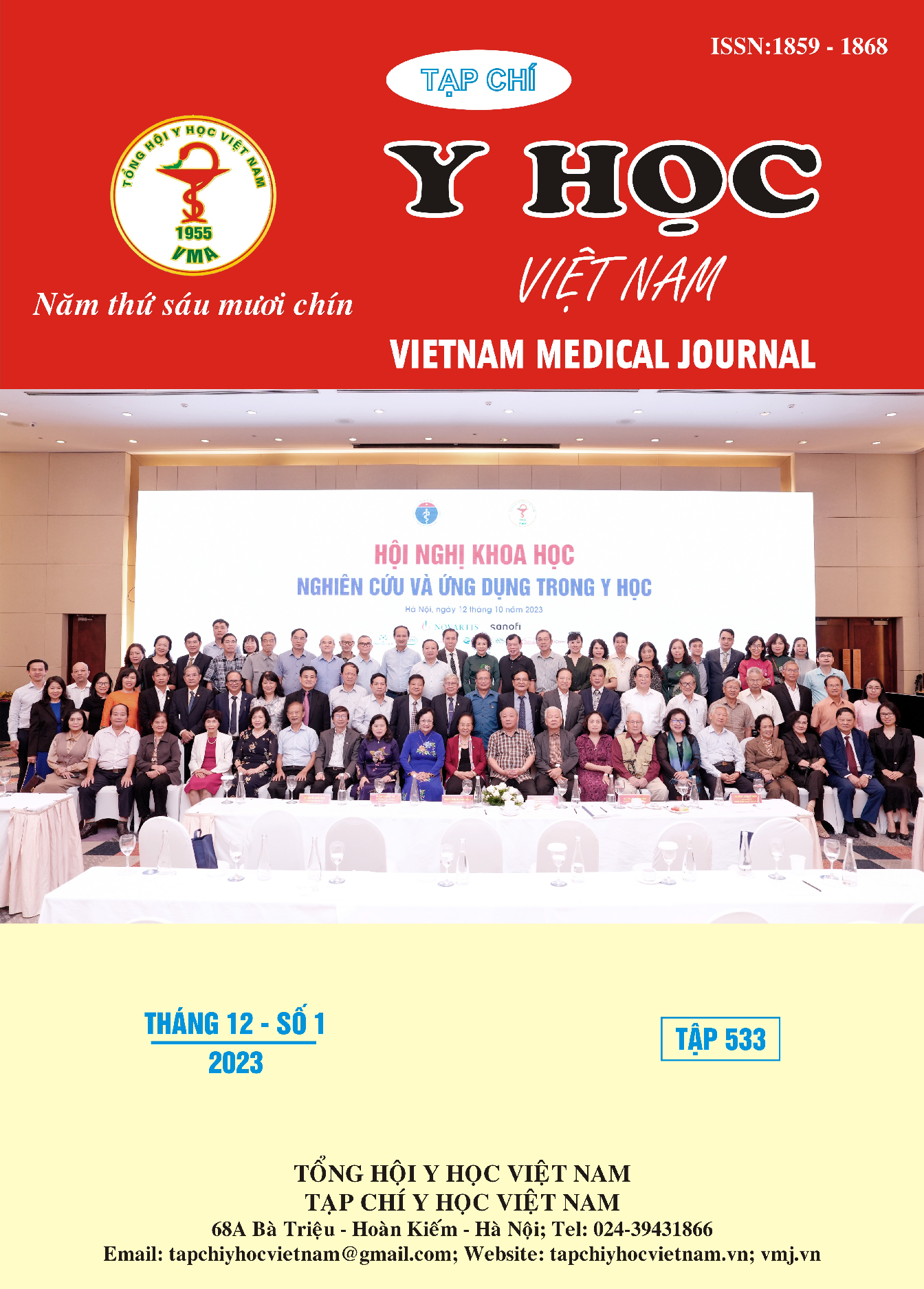CLINICAL CHARACTERISTICS AND FACTORS RELATED TO SWALLOWING DISORDERS IN CEREBRAL PALSY UNDER 6 YEARS OF AGE AT HANOI REHABILITATION HOSPITAL
Main Article Content
Abstract
Objectives: To describe clinical characteristics and factors related to swallowing disorders in children with cerebral palsy under 6 years old at Hanoi Rehabilitation Hospital. Methods: A cross-sectional descriptive study, 69 children with cerebral palsy under 6 years old were examined and treated at the Pediatric Department - Hanoi Rehabilitation Hospital from October 2022 to July 2023. Children were assessed for swallowing disorders using the Swallowing Disorders Survey (DDS) scale, drooling status by the Thomas - Stonell and Greenberg Saliva Severity Scale, and gross motor function by the Gross Motor Function Classification System (GMFCS). Results: Among the 69 children participating in the study, 59 children had swallowing disorders, accounting for 81.2%, the average DDS score of the research group was 5.1 ± 5.18. Swallowing disorders occur at all levels of GMFCS, the risk of children with cerebral palsy having moderate - severe swallowing disorders in GMFCS IV-V groups is 13 times higher than in children with levels I-III (Cl95% = 3.89 - 43.5, p<0.01). In addition, swallowing disorders in children with cerebral palsy are closely related to the type of cerebral palsy, in which the dyskinetic type has an average DDS score of 12.4 ± 6.5, significantly higher than the spastic type of 4.94 ± 5.06. In the group of children with spastic cerebral palsy, quadriplegia had a higher rate of swallowing disorders as well as a higher average DDS score than diplegia and unilateral. Children with drooling have a 9.61 times higher risk of moderate to severe swallowing disorders than children without drooling. Conclusion: The rate of swallowing disorders in children with cerebral palsy is 81.2%, appearing at all levels of GMFCS. There is a significant relationship between the degree of swallowing disorder and cerebral palsy, gross motor function (GMFCS), anatomical localization and drooling in children with cerebral palsy.
Article Details
Keywords
Cerebral palsy, swallowing disorders, clinical characteristics, related factors.
References
2. Oskoui M, Coutinho F, Dykeman J, Jetté N, Pringsheim T. An update on the prevalence of cerebral palsy: a systematic review and meta-analysis. Dev Med Child Neurol. 2013;55(6):509-519. doi:10.1111/dmcn.12080
3. Arneson CL, Durkin MS, Benedict RE, et al. Prevalence of cerebral palsy: Autism and Developmental Disabilities Monitoring Network, three sites, United States, 2004. Disabil Health J. 2009;2(1):45-48. doi:10.1016/j.dhjo.2008.08.001
4. Surveillance of Cerebral Palsy in Europe. Surveillance of cerebral palsy in Europe: a collaboration of cerebral palsy surveys and registers. Surveillance of Cerebral Palsy in Europe (SCPE). Dev Med Child Neurol. 2000;42(12):816-824. doi:10.1017/s0012162200001511
5. Benfer KA, Weir KA, Bell KL, Ware RS, Davies PSW, Boyd RN. Oropharyngeal dysphagia in preschool children with cerebral palsy: oral phase impairments. Res Dev Disabil. 2014;35(12): 3469-3481. doi: 10.1016/j.ridd. 2014.08.029
6. Benfer KA, Weir KA, Bell KL, Ware RS, Davies PSW, Boyd RN. Validity and reproducibility of measures of oropharyngeal dysphagia in preschool children with cerebral palsy. Dev Med Child Neurol. 2015;57(4):358-365. doi:10.1111/dmcn.12616
7. Calis EA, Veugelers R, Sheppard JJ, Tibboel D, Evenhuis HM, Penning C. Dysphagia in children with severe generalized cerebral palsy and intellectual disability. Dev Med Child Neurol. 2008;50(8): 625-630. doi: 10.1111/j.1469-8749. 2008.03047.x
8. Reilly S, Skuse D, Poblete X. Prevalence of feeding problems and oral motor dysfunction in children with cerebral palsy: a community survey. J Pediatr. 1996;129(6): 877-882. doi: 10.1016/ s0022-3476(96)70032-x


